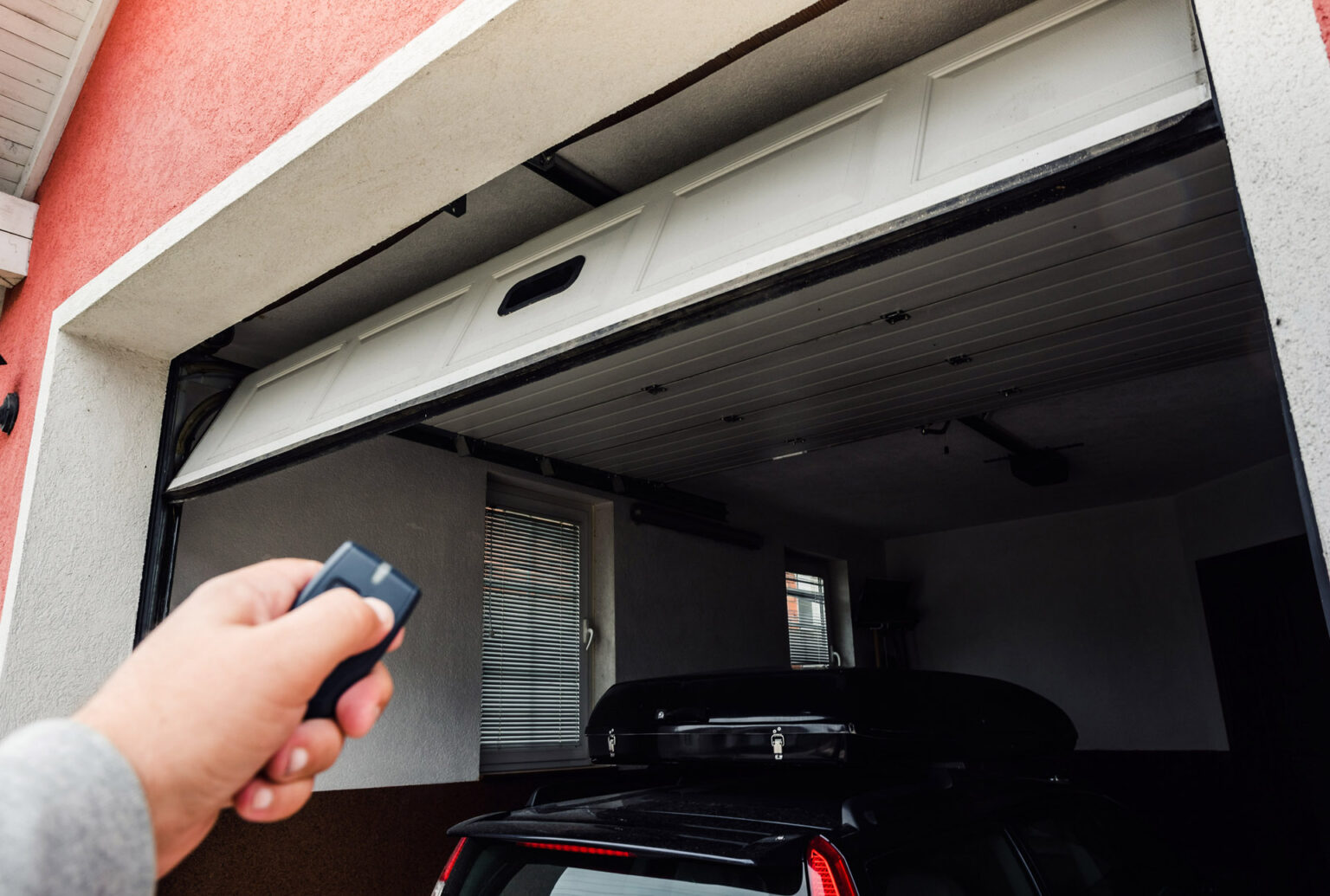

Articles
How To Get New Garage Door Opener
Modified: October 20, 2024
Looking for articles on how to get a new garage door opener? Explore our expert guides and tips to find the best options for your home.
(Many of the links in this article redirect to a specific reviewed product. Your purchase of these products through affiliate links helps to generate commission for Storables.com, at no extra cost. Learn more)
Introduction
Welcome to our comprehensive guide on how to choose and install a new garage door opener. If you’re experiencing issues with your current opener or simply looking to upgrade to a more efficient and secure system, you’ve come to the right place. A new garage door opener can enhance the convenience, safety, and overall functionality of your garage, providing you with peace of mind and ease of use.
Whether you’re a seasoned DIY enthusiast or a first-time homeowner, this article will walk you through the necessary steps to select the right garage door opener for your needs and successfully install it. We’ll cover everything from assessing your requirements and researching different options to measuring your garage door and troubleshooting any issues that may arise along the way.
Before diving into the specifics, it’s important to understand the importance of choosing a reliable and suitable garage door opener. This device not only controls the opening and closing of your garage door but also plays a vital role in ensuring the safety of your home and possessions. Therefore, taking the time to make an informed decision is crucial.
Throughout this guide, we’ll provide valuable insights, tips, and advice to help you navigate the process seamlessly. By the end, you’ll be well-equipped with the knowledge and confidence to select, purchase, and install your new garage door opener, ensuring smooth operation and maximum convenience for years to come.
So, let’s get started with step one: determining the type of garage door opener you need. Understanding the various types available will enable you to choose the most suitable one for your specific requirements.
Key Takeaways:
- Choosing the right garage door opener involves considering the type, features, and budget. Thorough research, accurate measurements, and reliable installation are essential for a smooth and successful process.
- After purchasing and installing a new garage door opener, thorough testing, troubleshooting, and regular maintenance ensure smooth and safe operation. Enjoy the convenience and security it brings to your daily routine.
Read more: How To Open A Chamberlain Garage Door Opener
Step 1: Determine the Type of Garage Door Opener You Need
Choosing the right type of garage door opener is crucial for the smooth operation and long-term reliability of your garage door system. There are three main types of garage door openers to consider: chain drive, belt drive, and screw drive.
1. Chain Drive: This is the most common and affordable type of garage door opener. It operates using a metal chain to pull or push the trolley that moves the door up and down. While chain drive openers are durable and can handle heavy doors, they tend to be louder and produce vibrations during operation.
2. Belt Drive: As the name suggests, belt drive openers use a reinforced rubber belt to drive the door. They are quieter and smoother in operation compared to chain drive openers, making them a popular choice for those with living spaces near the garage. Although typically more expensive than chain drive openers, belt drive models offer increased longevity and require less maintenance.
3. Screw Drive: This type of opener uses a threaded steel rod to move the trolley that opens and closes the door. Screw drive openers are known for their simplicity and reliability, as they have fewer moving parts compared to chain and belt drive systems. These openers are ideal for areas with consistent climate conditions as they are less affected by temperature changes. However, screw drive openers may not be suitable for areas with extreme temperature variations.
When deciding on the type of garage door opener, consider your specific requirements, budget, and the level of noise tolerance. For instance, if your garage is detached or located away from living spaces, a chain drive opener may be a cost-effective option. However, if noise is a concern or your garage is attached to your home, opting for a belt drive opener would be a wise choice.
Another consideration is the weight and size of your garage door. Chain drive openers are suitable for most doors, including heavier ones, while belt drive and screw drive openers are better suited for standard-sized doors. It’s essential to check the manufacturer’s specifications to ensure compatibility with your specific garage door.
Now that you have a better understanding of the different types of garage door openers, you can move on to step two: researching different brands and models. This will help you find the best options that match your needs, preferences, and budget.
Step 2: Research Different Brands and Models
Once you’ve determined the type of garage door opener that suits your needs, it’s time to dive into researching different brands and models. With numerous options available in the market, it’s important to consider factors such as reliability, features, warranties, and customer reviews to make an informed decision.
Here are some key points to keep in mind during your research:
1. Brand Reputation: Look for brands that have established a solid reputation in the industry. Trusted and reputable brands are more likely to offer high-quality products with excellent customer support. They also tend to have a wider range of options to choose from.
2. Features and Technology: Consider the features and technology offered by different models. Some common features to look for include remote access, smartphone integration, battery backup, motion sensors, and Wi-Fi connectivity. Assess your requirements and prioritize the features that are most important to you.
3. Noise Level: If noise is a concern, pay attention to the noise level ratings of the garage door opener models. Look for openers that emphasize quiet operation, such as those with vibration isolation systems or belt drive mechanisms. This is especially important if your garage is attached to your home or if you have living spaces nearby.
4. Warranties and Customer Support: Check the warranty coverage offered by different brands and compare the terms and conditions. A longer warranty period indicates the manufacturer’s confidence in its product’s reliability. Additionally, research the brand’s customer support reputation to ensure that you can easily reach out for assistance if needed.
5. Budget: Determine your budget range and look for options that fall within that range. While it’s important to consider cost, remember that choosing a reliable and durable garage door opener is an investment in the long run. Avoid compromising quality for a cheaper price.
During your research, take note of the pros and cons of each model you come across. Reading customer reviews and ratings can provide valuable insights into the experiences of other users. Pay attention to any common issues or recurring praises.
Once you have narrowed down your options based on your research, you’re ready to move on to step three: measuring your garage door. Proper measurements are crucial to ensure that the opener will fit your specific door size. We’ll cover this in detail in the next step.
Step 3: Measure Your Garage Door
Before purchasing a new garage door opener, it is essential to accurately measure your garage door to ensure compatibility and proper installation. Measuring the height, width, and clearance requirements of your door will help you determine the appropriate opener size and configuration.
Here’s a step-by-step guide to measuring your garage door:
1. Measure the height: Use a tape measure to measure the height of your garage door from the floor to the top edge. Start at one side and extend the tape measure up to the highest point of the door. Record the measurement in feet and inches.
2. Measure the width: Measure the width of your garage door from one side to the other. Start from the inside edge of the door frame and extend the tape measure to the opposite inside edge. Note the measurement in feet and inches.
3. Measure the headroom: The headroom is the distance between the top of the door opening and the ceiling. This measurement is crucial for determining the type of opener that will work best for your garage. To measure the headroom, ensure the door is in the fully open position. Measure from the top of the door opening to the ceiling. This measurement will help you determine if a standard opener will fit or if you need a low-headroom or high-lift configuration.
4. Measure the backroom: The backroom is the distance from the garage door opening to the back wall of the garage. This measurement is important for ensuring there is enough space for the opener and any additional hardware. Measure from the inside of the door opening to the back wall of the garage. Note this measurement in feet and inches.
5. Measure the side room: The side room is the distance between the side of the garage door opening and the nearest wall or obstruction. This measurement ensures that there is enough space for the opener to be installed properly. Measure from the inside edge of the door opening to the nearest wall or obstruction on both sides. Record these measurements in feet and inches.
Ensure that your measurements are accurate and take note of any obstructions or irregularities that may affect the installation process. It is advisable to measure in multiple locations to account for any variations in the door or framing.
Once you have all the necessary measurements, you can proceed to step four: considering additional features and accessories. This will help you enhance the functionality and convenience of your new garage door opener.
Step 4: Consider Additional Features and Accessories
When selecting a new garage door opener, it’s important to consider additional features and accessories that can enhance the functionality and convenience of your garage door system. These optional extras can provide added security, ease of use, and customization options. Here are some features and accessories to consider:
Read more: How Much Is A Garage Door Opener
1. Remote Controls:
Most garage door openers come with at least one remote control, allowing you to conveniently open and close the door from inside your vehicle or outside the garage. Consider the number of remote controls you will need for your household and check if the opener supports additional remotes, if required.
2. Keypad Entry System:
A keypad entry system allows you to enter a code to open and close the garage door, providing keyless access. This can be useful for family members, visitors, or for situations when you don’t have access to a remote control. Look for an opener that is compatible with a keypad system and consider the level of security it offers.
3. Battery Backup:
A battery backup system ensures that your garage door opener can operate even during power outages. This feature provides peace of mind and allows you to access your garage in emergency situations. Check if the opener includes a battery backup or if it is available as an add-on accessory.
4. Wi-Fi Connectivity and Smart Home Integration:
Many modern garage door openers offer Wi-Fi connectivity, allowing you to control and monitor your garage door remotely through a smartphone app. This feature enables you to receive notifications about the door’s status, open or close it from anywhere, and integrate it with smart home systems like Amazon Alexa or Google Assistant.
Read more: How To Set A Garage Door Opener
5. Security Features:
Ensure that the garage door opener you choose has advanced security features to protect against unauthorized access. Look for models with rolling code technology, which generates a new code every time the door is operated, preventing code theft or replication. Additionally, some openers offer vacation or lockout modes for added security when you’re away from home.
6. Lighting Options:
Consider whether you want additional lighting options for your garage. Some garage door openers come with built-in lights that illuminate the garage space when the door is in use. You may also have the option to customize the lighting settings, such as brightness or duration.
7. HomeLink Compatibility:
If you have a vehicle equipped with a HomeLink system, ensure that the garage door opener is compatible. HomeLink allows you to program your vehicle’s built-in buttons to control your garage door, eliminating the need for separate remotes.
By considering these additional features and accessories, you can customize your garage door opener to best meet your needs and preferences. Once you’ve decided on the desired features, it’s time to move on to step five: setting a budget.
Step 5: Set a Budget
Setting a budget is an essential step when purchasing a new garage door opener. It helps you narrow down your options and ensures that you choose a product that aligns with your financial capabilities. Consider the following factors as you determine your budget:
Read more: How To Fix Garage Door Opener
Quality and Reliability:
Higher-quality garage door openers often come with a higher price tag but offer better durability, performance, and longevity. Investing in a reliable opener can save you from costly repairs or replacements in the future. Consider your budget in terms of the long-term value and quality you want to obtain.
Opener Type and Features:
The type of garage door opener you choose and the features you require can significantly impact the cost. Chain drive openers are typically the most affordable, while belt drive and screw drive openers tend to be more expensive. Additional features such as Wi-Fi connectivity or battery backup might also come at an extra cost. Determine the level of features and technology that are important to you and align your budget accordingly.
Installation Costs:
In addition to the cost of the garage door opener itself, consider any potential installation expenses. If you plan on hiring a professional to install the opener, factor in the installation cost when setting your budget. Keep in mind that some opener models may require additional hardware or modifications, which can increase the installation cost.
Warranty and Customer Support:
Consider the warranty period and coverage offered by different manufacturers. Some brands may provide longer warranties, indicating their confidence in the product’s quality. It’s also important to research the customer support reputation of the brand to ensure you’ll receive assistance if any issues arise during the warranty period.
Read more: How To Adjust Garage Door Opener
Research and Compare Prices:
Take the time to research and compare prices from different retailers or suppliers. Look for promotions, discounts, or special offers that may help you stay within budget. Be cautious of extremely low-priced options, as they may compromise on quality and reliability.
Remember that investing in a reliable and high-quality garage door opener is a worthwhile investment in the long run. While setting a budget is important, try to strike a balance between cost and the features and quality you desire.
Once you have determined your budget, you can move on to step six: finding a reliable retailer or supplier. This step will ensure that you purchase your garage door opener from a reputable source.
Step 6: Find a Reliable Retailer or Supplier
When purchasing a new garage door opener, finding a reliable retailer or supplier is crucial to ensure a smooth and satisfactory experience. Here are some key points to consider when looking for a reputable retailer or supplier:
1. Reputation and Reviews:
Research the reputation of potential retailers or suppliers. Look for well-established companies with positive reviews and ratings from previous customers. Reading reviews can provide insights into the quality of their products, customer service, and overall satisfaction.
2. Authorized Dealers:
Consider purchasing your garage door opener from authorized dealers or suppliers. This ensures that you are getting genuine products directly from the manufacturer, along with any warranties or guarantees associated with the purchase. Authorized dealers are also knowledgeable about the product and can assist with any questions or concerns.
Read more: How To Reprogram A Garage Door Opener
3. Wide Selection:
Choose a retailer or supplier that offers a wide selection of garage door openers from various brands and models. Having multiple options allows you to compare features, prices, and specifications to find the best fit for your needs and budget.
4. Expert Advice:
Look for retailers or suppliers with knowledgeable staff who can provide expert advice and guidance. They should be able to answer your questions, help you understand the different options, and assist you in making an informed decision. A reputable retailer will prioritize customer satisfaction and ensure that you have a positive buying experience.
5. Price and Value:
While cost is important, it’s equally essential to consider the value you will receive for your investment. Compare prices from different retailers or suppliers, but also assess the quality of the products, warranties offered, and customer support. Remember that a slightly higher price for a reliable opener with excellent features and support may provide better long-term value.
6. Customer Support and After-Sales Service:
Ensure that the retailer or supplier has a helpful and responsive customer support system. Prompt and efficient after-sales service can make a significant difference if any issues arise with your garage door opener after installation. Check their policies regarding returns, exchanges, and warranty claims.
By finding a reliable retailer or supplier, you can have confidence in the authenticity of the product, the quality of the customer service, and the overall shopping experience. Once you have selected a trustworthy retailer or supplier, you can proceed to step seven: purchasing and installing the new garage door opener.
Read more: How To Disable A Garage Door Opener
Step 7: Purchase and Install the New Garage Door Opener
After thorough research and finding a reliable retailer or supplier, it’s time to purchase and install your new garage door opener. Follow these steps for a smooth and successful installation:
1. Finalize the Purchase:
Complete your purchase either online or in-store, ensuring that you have all the necessary components included in the package. Double-check that the opener you have selected matches your requirements, including the type, features, and compatibility with your garage door.
2. Review the Instructions:
Before starting the installation process, carefully read through the manufacturer’s instructions provided with the opener. Familiarize yourself with the steps and requirements to ensure a proper installation.
3. Gather the Required Tools:
Collect all the tools and equipment needed for the installation, as specified in the instructions. Typical tools may include a power drill, screwdriver, level, tape measure, and pliers. Having the necessary tools on hand will streamline the installation process.
Read more: How To Open A Garage Door Remote
4. Prepare the Garage Door Area:
Clear the area around the garage door and ensure there is enough space to work comfortably. Remove any obstacles, vehicles, or clutter that may hinder the installation process. Additionally, disconnect the power to the garage door opener if there is an existing one installed.
5. Follow the Installation Steps:
Follow the step-by-step instructions provided by the manufacturer to install the new garage door opener. This may involve assembling the opener components, attaching the motor to the ceiling or wall, installing the rail system, connecting the garage door arm, and wiring the opener according to the instructions. Take time to ensure each step is performed accurately and securely.
6. Test the Garage Door Opener:
Once the installation is complete, test the functionality of the garage door opener. Activate the opener using the remote control or keypad entry system and observe the door’s movement. Confirm that the door opens and closes smoothly without any unusual noises or issues. If any problems are detected, consult the troubleshooting section of the instructions or seek professional assistance if needed.
7. Secure and Adjust as Needed:
Secure all the fasteners and brackets to ensure everything is properly attached. Check for any loose screws or parts and tighten them as necessary. Take the time to adjust the settings, such as the force and travel limits, to ensure the door operates safely and effectively.
Read more: What Is The Best Garage Door Opener
8. Consider Professional Installation:
If you are unsure about your ability to install the garage door opener correctly or if you encounter any difficulties during the process, it’s recommended to seek professional installation. Hiring a skilled technician can ensure a safe and efficient installation, giving you peace of mind.
By purchasing and installing the new garage door opener following these steps, you can enjoy the benefits of a reliable and functional system. The final step is to test and troubleshoot the opener, verifying that it operates smoothly and meets your expectations.
Step 8: Test and Troubleshoot the Garage Door Opener
After successfully installing your new garage door opener, it’s important to thoroughly test and troubleshoot its functionality to ensure smooth and safe operation. Here are the steps to follow:
1. Test the Basic Functions:
Use the remote control or keypad entry system to open and close the garage door multiple times. Observe the movement of the door, ensuring it opens and closes smoothly without any jerking or unusual noises. Pay attention to any delays or erratic behavior during the operation.
2. Test the Safety Features:
Most modern garage door openers come equipped with safety features such as photo-eye sensors and auto-reverse mechanisms. Check if these safety features are functioning correctly. Place an object, such as a block of wood, in the path of the closing door and verify that it reverses its direction when it encounters the obstruction. Ensure that the photo-eye sensors detect any objects or obstructions in the doorway and prevent the door from closing completely if necessary.
Read more: Who Sells Garage Door Openers
3. Adjust the Settings:
Refer to the manufacturer’s instructions and adjust the force and travel limits if needed. The force adjustment ensures that the garage door opener exerts the right amount of force to open and close the door smoothly without causing any strain. The travel limits determine the range of motion of the door and should be set to allow the door to open fully and close securely in its designated position.
4. Lubricate Moving Parts:
To ensure optimal performance and longevity, regularly lubricate the moving parts of your garage door opener. Apply a silicone-based lubricant to the rollers, hinges, and other metal components. Avoid using excessive amounts of lubricant, as it can attract dirt and debris.
5. Check Remote Control Range:
Test the range of your remote control by trying to operate the garage door opener from various distances within your property. Make sure the remote control is functioning correctly and that it can activate the door opener from a reasonable distance.
6. Troubleshoot Common Issues:
If you encounter any issues or abnormalities during the testing process, consult the troubleshooting section of the manufacturer’s instructions. Common issues may include the door not opening or closing fully, uneven movement, or unusual sounds. Follow the recommended troubleshooting steps to diagnose and resolve the problem. If the issue persists, contact the manufacturer or seek professional assistance for further guidance.
7. Maintain Regular Inspections:
To ensure continued smooth operation, regularly inspect your garage door opener for any signs of wear or damage. Check the cables, springs, and other components for any signs of fraying, rust, or misalignment. Additionally, keep the area around the opener clean and free from debris to prevent any interference or obstruction.
By thoroughly testing and troubleshooting your garage door opener, you can address any potential issues early on and ensure its proper functioning. Regular maintenance and periodic inspections will help prolong the lifespan of your garage door opener and provide you with years of reliable service.
Congratulations! You have successfully completed all the steps to get your new garage door opener installed and operating smoothly. Enjoy the convenience, security, and peace of mind that comes with a reliable and efficient garage door opener.
If you have any further questions or need additional assistance, refer to the manufacturer’s instructions or consult a professional garage door technician.
Conclusion
Congratulations on completing the comprehensive guide to choosing and installing a new garage door opener. By following the step-by-step process outlined in this article, you have gained the knowledge and confidence to make an informed decision and successfully install your new opener.
Throughout the guide, we discussed various essential steps, including determining the type of opener you need, researching brands and models, measuring your garage door, considering additional features and accessories, setting a budget, finding a reliable retailer or supplier, purchasing and installing the opener, and testing and troubleshooting its functionality.
By determining the right type of opener, considering your specific requirements and budget, and performing accurate measurements, you ensured compatibility and ease of installation. Researching different brands and models allowed you to make an informed decision based on features, reliability, and value for money.
After finding a trustworthy retailer or supplier, you purchased the opener that met your needs and followed the manufacturer’s instructions to install it properly. Testing the opener and troubleshooting any issues ensured that it operated smoothly and safely.
Remember to perform regular maintenance and inspections to keep your garage door opener in optimal condition. Lubricate moving parts, check safety features, and address any problems promptly to extend the lifespan and functionality of your opener.
Now, enjoy the convenience, security, and ease of use that your new garage door opener provides. Whether it’s effortless entry into your garage, improved home security, or reduced noise levels, your new opener will undoubtedly enhance your daily routine.
If you have any further questions or require professional assistance, consult the manufacturer’s instructions or reach out to a garage door technician. They can provide guidance and support, ensuring the ongoing performance of your garage door opener.
Thank you for choosing our comprehensive guide. We hope it has been a valuable resource and that you have found success in your garage door opener installation journey.
Frequently Asked Questions about How To Get New Garage Door Opener
Was this page helpful?
At Storables.com, we guarantee accurate and reliable information. Our content, validated by Expert Board Contributors, is crafted following stringent Editorial Policies. We're committed to providing you with well-researched, expert-backed insights for all your informational needs.
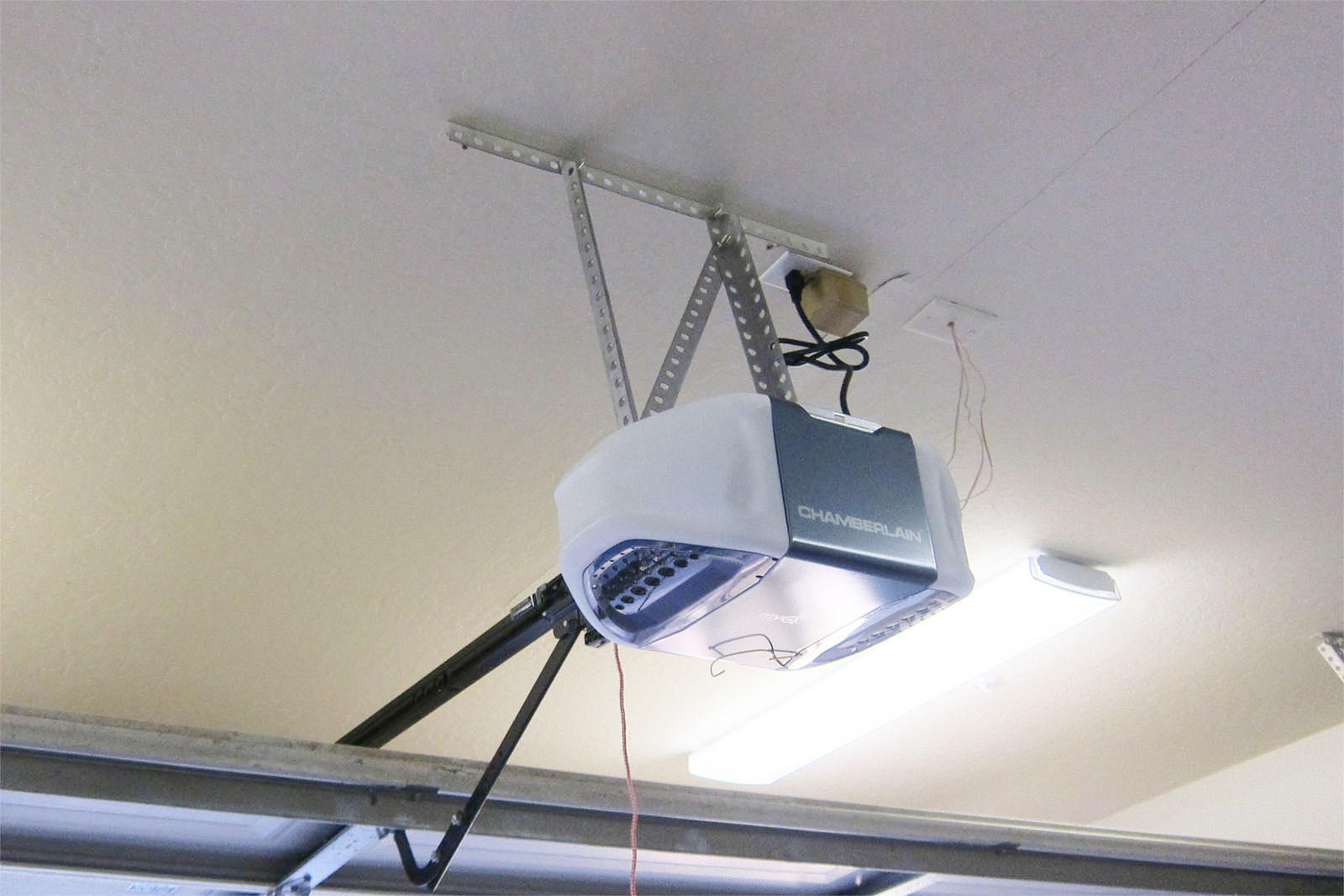
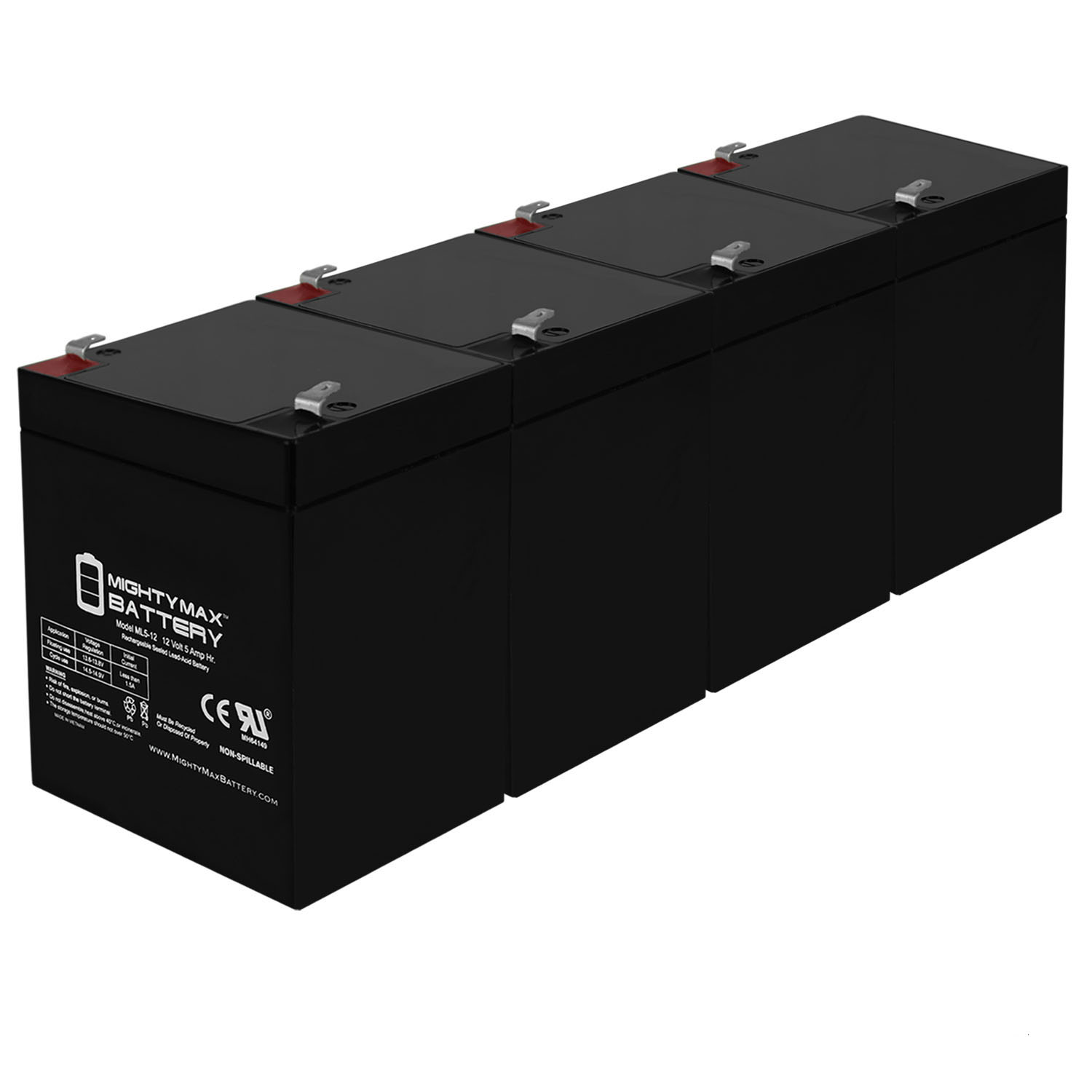
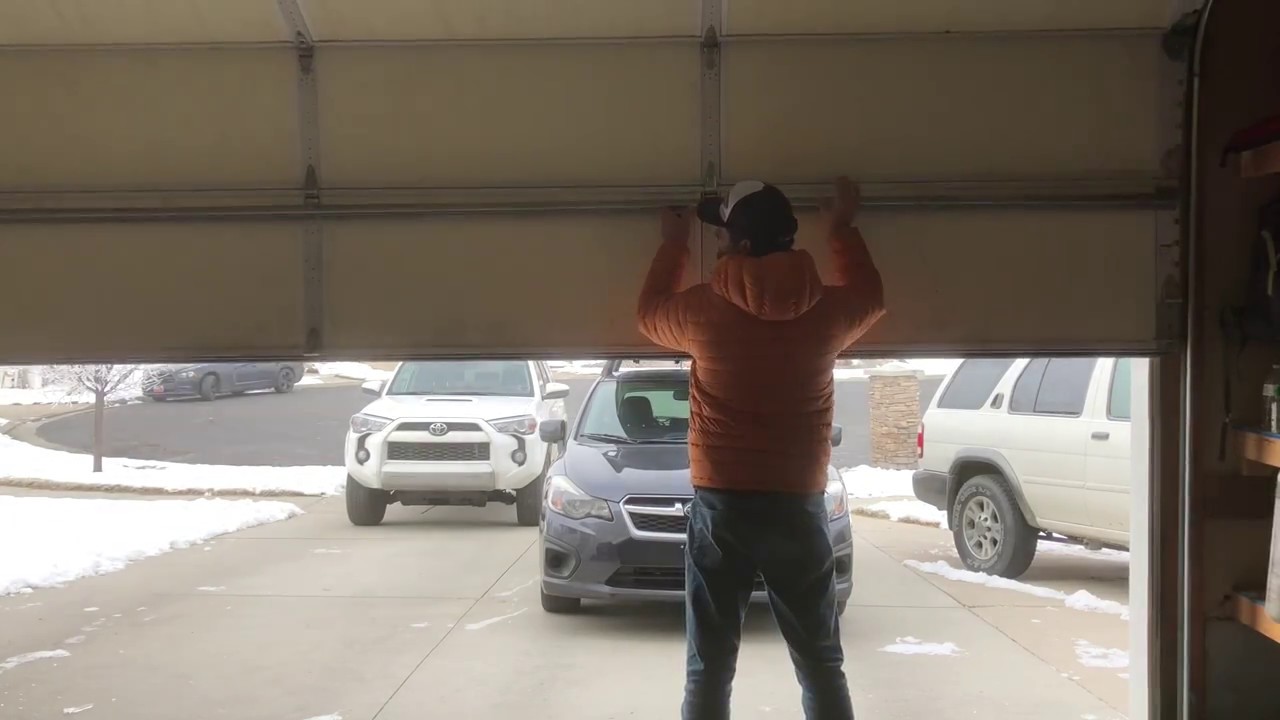
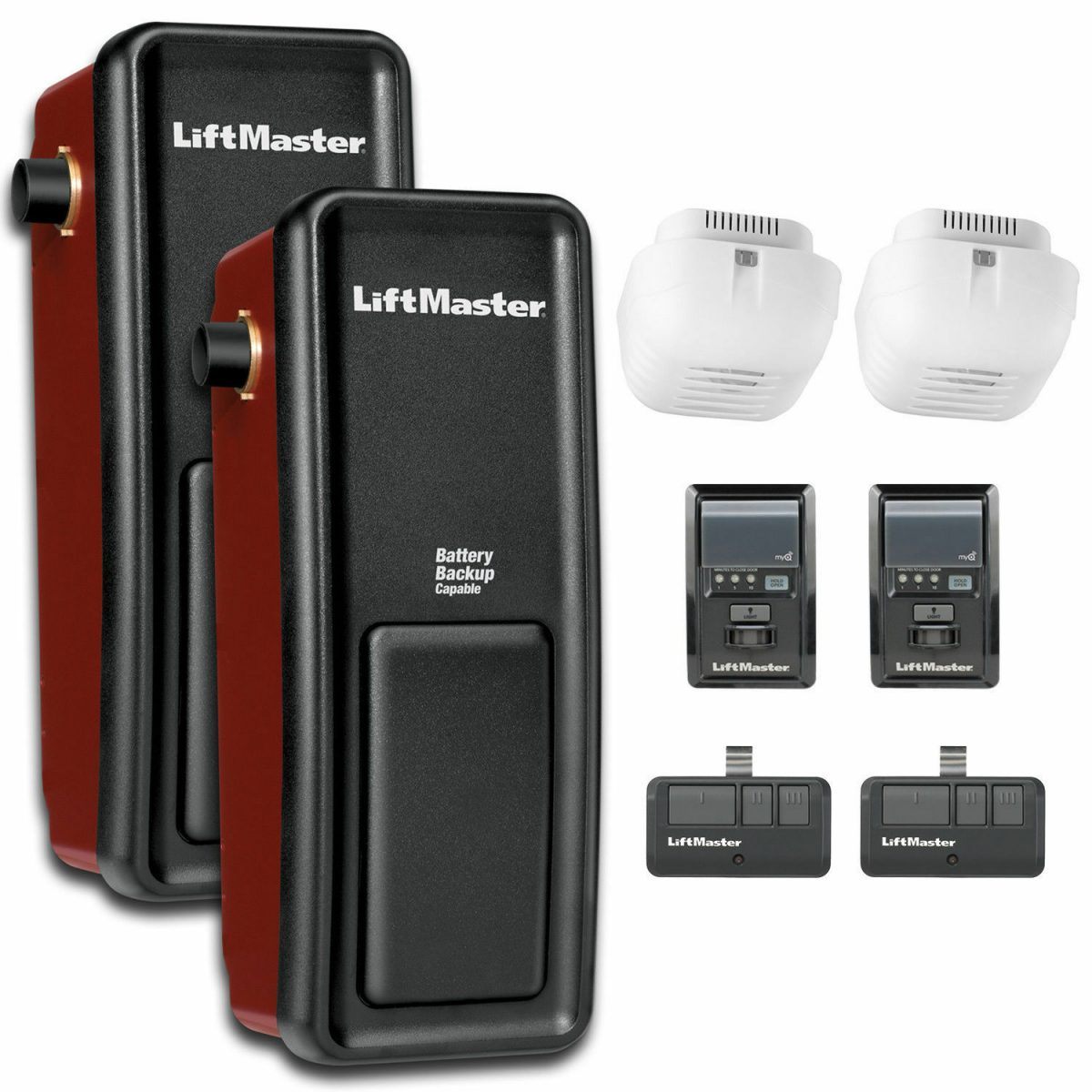
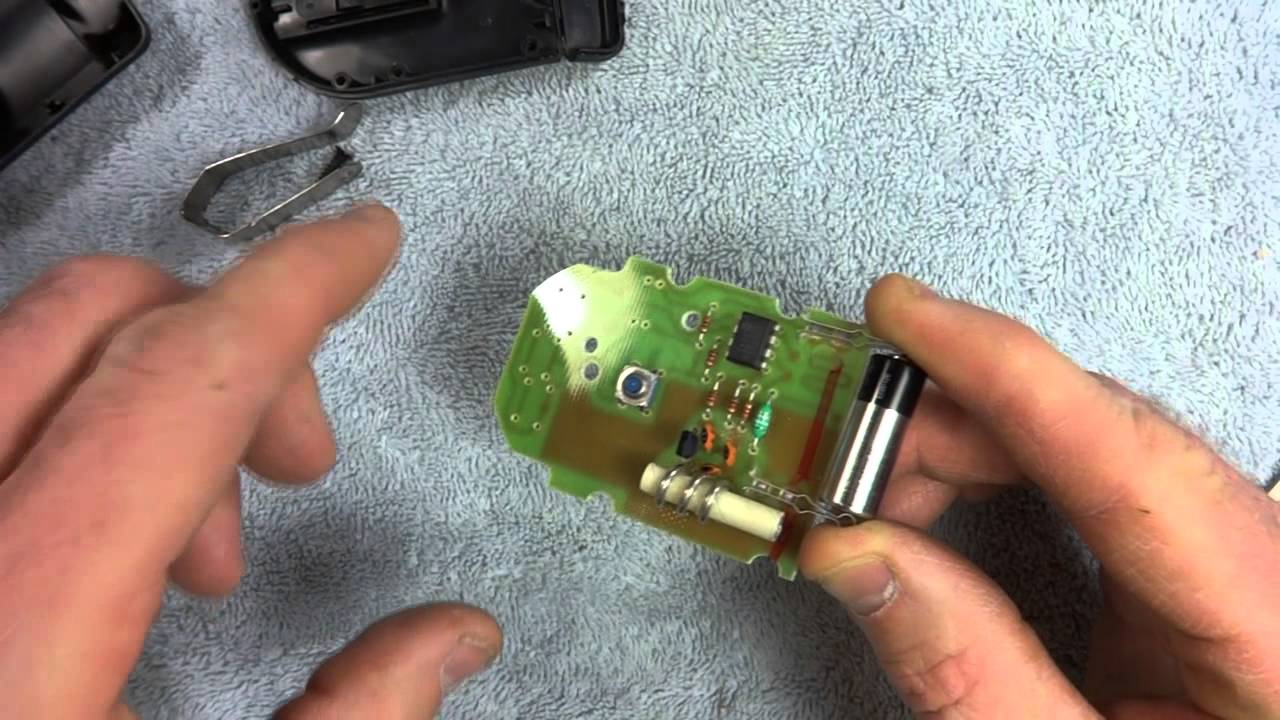

0 thoughts on “How To Get New Garage Door Opener”